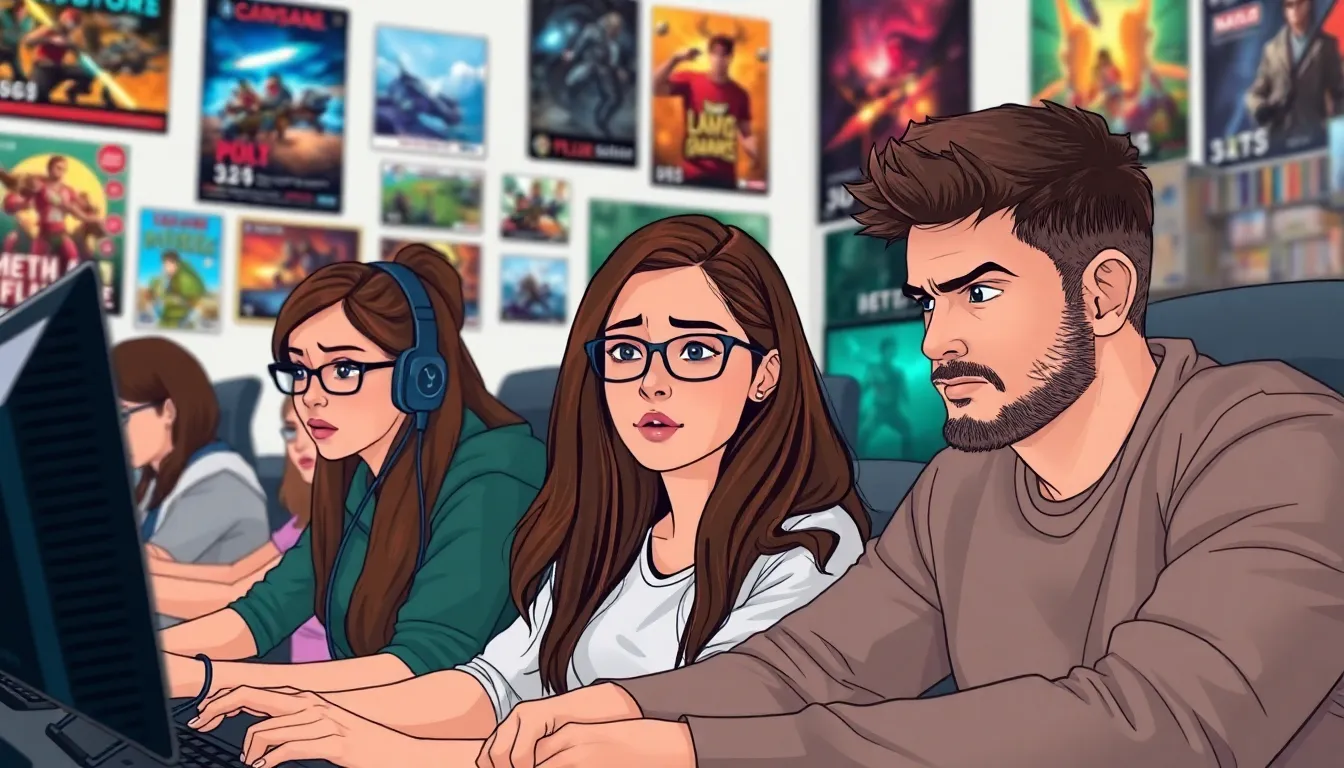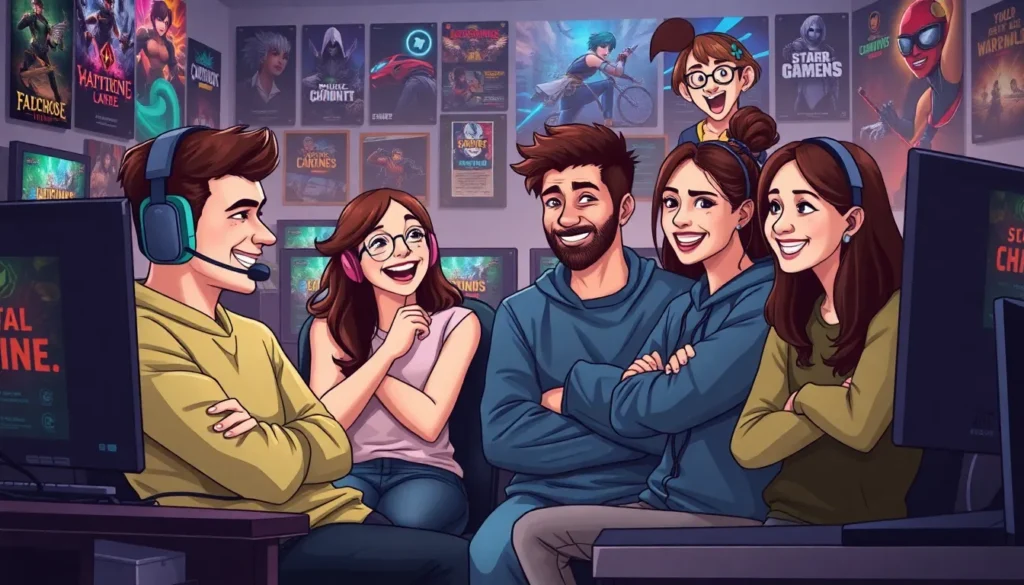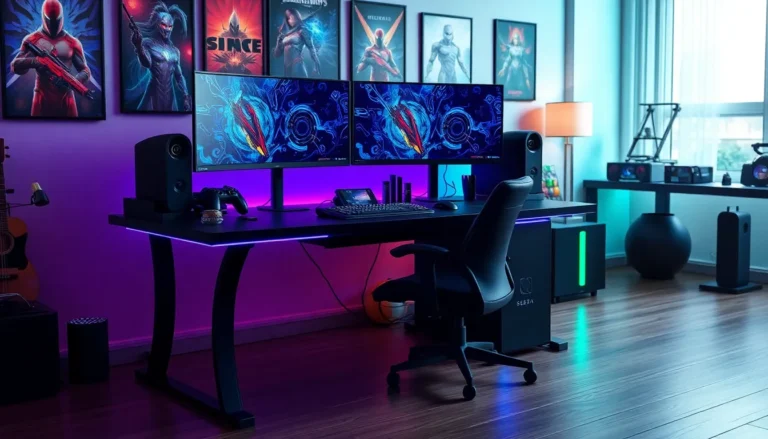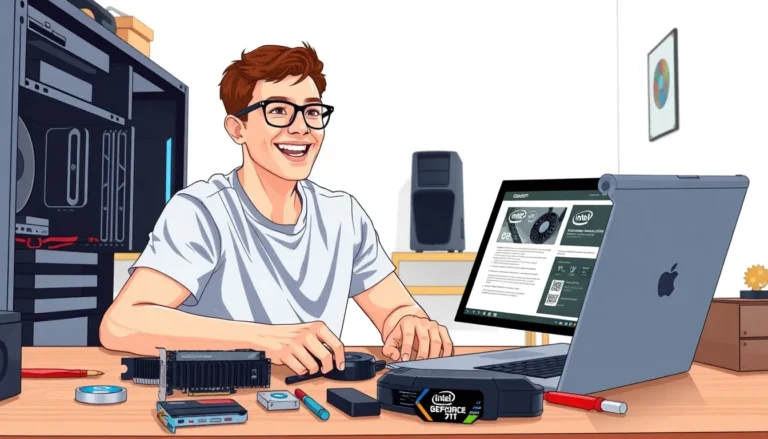In the vast universe of gaming, where epic quests and pixelated adventures thrive, some communities have developed a reputation that makes even the bravest players cringe. Ever found yourself in a chat filled with insults sharper than a sword? Welcome to the wild world of toxic gaming communities, where the only thing more toxic than the chat is the attitude of certain players.
From relentless trolls to keyboard warriors who think they’re the main character, these communities can turn a fun gaming session into a battlefield of negativity. But why do these toxic environments persist? Is it the anonymity of the internet or simply the thrill of being a digital villain? Buckle up as we dive into the most notorious gaming communities that make you wonder if the real boss fight is just surviving the chat.
Table of Contents
ToggleOverview of Toxic Gaming Communities
Toxic gaming communities emerge when players engage in hostile behavior, creating an unpleasant environment. Factors contributing to toxicity often include anonymity, competition, and social dynamics among gamers. Observations show that players feel emboldened to express negativity when their identities are concealed. Platforms like online forums and social media play a significant role in amplifying toxic interactions.
Notable examples include games such as “League of Legends,” where a percentage reports negative experiences, averaging 80% of surveyed players. Players often encounter harassment, bullying, and trolling, discouraging many from participating fully. Behaviors like trash talking and griefing become commonplace, leading to a culture that tolerates abuse.
Certain genres attract more toxicity than others, often aligning with competitive gameplay. First-person shooters and multiplayer online battle arenas frequently see higher instances of negative behavior. Consequences of these toxic communities can extend beyond the game, impacting mental health, fostering poor sportsmanship, and discouraging newcomers.
Reports indicate that many gamers avoid communicating with others due to fear of backlash. Almost half express that the negative experiences led to reduced enjoyment. Community-driven moderation efforts can help alleviate toxicity in some scenarios, but the effectiveness varies considerably.
Solutions must focus on improving player accountability and fostering a positive atmosphere. Developers increasingly implement systems to identify and penalize toxic behavior, although results take time. Education plays a vital role in reducing toxicity, promoting a culture where respect becomes the norm instead of the exception.
Characteristics of Toxicity

Toxic gaming communities exhibit distinct traits that foster negativity and hostility among players. Understanding these characteristics is crucial for recognizing harmful environments.
Verbal Abuse and Harassment
Verbal abuse and harassment dominate many toxic gaming communities. Gamers often resort to insults, threats, or derogatory remarks when losing or facing criticism. Data reveals that over 50% of players in competitive games report experiencing harassment. This abuse can include personal attacks targeting a player’s skills, appearance, or background, creating an unsettling atmosphere. Such behaviors discourage healthy competition, prompting individuals to disengage from gameplay altogether. Platforms like “League of Legends” illustrate these trends, as numerous players actively report encounters with toxic language. Addressing verbal abuse requires a commitment to fostering respectful communication among players.
Gatekeeping and Exclusion
Gatekeeping and exclusion create barriers in toxic gaming communities. Certain players often assert superiority by dismissing newcomers or less experienced gamers. This behavior manifests in statements that invalidate others’ skills or experiences within the game. Findings suggest that approximately 40% of gamers recognize instances where experienced players discourage participation. The culture of exclusion can lead to feelings of isolation and intimidation for newcomers. Encouraging inclusivity within gaming environments necessitates a shift in community attitudes, promoting acceptance rather than elitism. Supporting diverse gaming experiences ensures that all players feel welcome and empowered to engage without fear of judgment.
Notable Examples of Toxic Gaming Communities
Certain gaming communities exemplify toxicity in alarming ways, detracting from the overall experience. Below are notable examples highlighting the adverse effects of toxic behavior.
Community A: The Downfall of Player Interaction
“League of Legends” stands out for its overwhelming negativity, with nearly 50% of players reporting negative experiences. Competitive pressure exacerbates this toxicity, leading to aggressive player interactions. Harassment, insults, and backhanded compliments often surface, creating a hostile environment. Players frequently avoid communication to evade backlash, resulting in a lack of teamwork and camaraderie. This downward spiral undermines collaboration, impacting game enjoyment. Reports of toxicity in “League of Legends” suggest a pressing need for community reform.
Community B: Bullying and its Impact
First-person shooters such as “Call of Duty” exhibit rampant bullying behavior that affects player well-being. Approximately 60% of players have encountered harassment or bullying, leading to significant mental health concerns. Intimidation tactics, derogatory remarks, and exclusion not only create animosity but also deter new players from joining. The fear of receiving personal attacks contributes to a toxic cycle, diminishing people’s overall enjoyment. Escalating bullying incidents reveal the urgent call for measures that promote respect and accountability within these environments. Prioritizing positive interactions in such communities can foster a healthier gaming atmosphere.
Impact on Players and Developers
Toxic gaming communities significantly influence both players and developers. Negative interactions create an unhealthy environment that can affect mental well-being.
Mental Health Consequences
Nearly 50% of players in toxic environments report diminished enjoyment. Anxiety often increases when harassment occurs, making gaming feel stressful instead of enjoyable. Feelings of isolation arise when newcomers face hostility, discouraging them from engaging with the community. Additionally, the constant exposure to verbal abuse leads to lower self-esteem among players. Persistent negativity can also contribute to long-term psychological issues, including depression. With approximately 60% of players in first-person shooters experiencing harassment, the connection between toxic behavior and mental health remains undeniable.
Effect on Game Development
Developers face unique challenges due to toxicity within gaming communities. Toxic behaviors often hinder player retention, leading to significant revenue loss. Feedback becomes skewed when negative experiences overshadow constructive criticism. Developers increasingly allocate resources to improve community management and moderation systems. Implementing reporting tools and strict penalties for toxic behavior has become essential. Approximately 40% of gamers identify exclusionary practices as significant issues, prompting developers to seek solutions that promote inclusivity. Prioritizing positive player interactions enhances not only community health but also the game’s longevity.
How to Foster a Positive Gaming Environment
Creating a supportive gaming atmosphere involves several strategies. Encouragement of respectful communication serves as a cornerstone for positive interactions. Developers can implement robust moderation tools, with reporting systems allowing players to flag toxic behavior. Regular community events also promote inclusivity, allowing players to engage in non-competitive environments.
Educational initiatives play a vital role in altering player behavior. Workshops highlighting the impact of toxicity can help gamers understand how their actions affect others. An increasing number of gaming platforms now offer resources on conflict resolution and empathy, expanding awareness among users.
In addition, fostering mentorship opportunities can bridge gaps between experienced gamers and newcomers. Providing guidance helps create welcoming spaces, with about 40% of gamers recognizing the need for support for new players. Teams can establish codes of conduct that emphasize teamwork over rivalry, promoting collaboration instead of competition.
Encouraging positive reinforcement within communities has tangible benefits. Gamers who receive recognition for positive behavior are more likely to continue that behavior, reinforcing a culture of respect. Instances of harassment can drop significantly when players see the rewards for maintaining a supportive environment.
Active engagement from developers can further enhance community health. When developers prioritize player satisfaction and mental well-being, they foster loyalty and improve retention rates. Addressing toxicity head-on helps create an inviting space for all players, reducing negative experiences reported by nearly 50% in toxic environments.
Adopting these approaches builds a positive gaming culture that attracts widespread participation, reducing feelings of isolation and anxiety. By prioritizing these efforts, gaming communities can evolve into supportive, thriving environments for everyone.
Toxic gaming communities pose significant challenges for players and developers alike. The prevalence of harassment and negative interactions can lead to lasting psychological effects and deter new participants from engaging in the gaming experience. By prioritizing accountability and fostering environments that encourage respect and inclusivity, the gaming industry can begin to shift the narrative around player interactions.
Implementing effective moderation tools and promoting positive behavior through community initiatives will be essential in transforming these toxic spaces into welcoming ones. As developers and players work together towards this goal, the gaming landscape can evolve into a more supportive and enjoyable environment for everyone involved.








